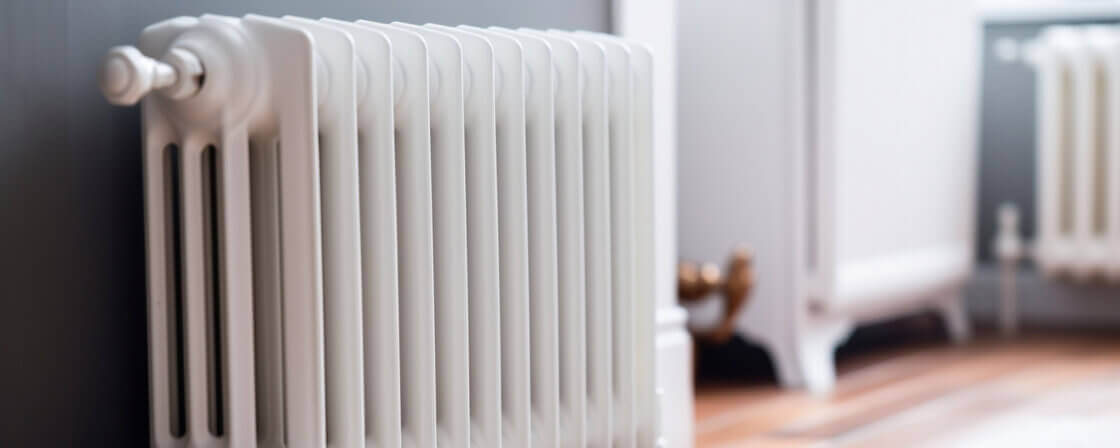The legal framework for the accounting is set out in the Services Act and the subsequent decree of the Ministry of Regional Development. It has been several years since the billing system used to calculate the heating costs of apartment buildings connected to a heating plant or with their own communal boiler room was modified. The aim of the adjustment of the billing system was to prevent the owners of some flats from being heated by others and thus save on costs. The adjustment was therefore aimed at greater fairness in billing.
There are several groups of flats in each block of flats. Firstly, there are the so-called centre flats, which are surrounded on most sides by other, consistently heated areas. Over time, the occupants of these flats get used to the fact that they do not actually have to heat much. Sometimes they wonder why their neighbours are not as energy-efficient as they are.
At the other extreme are the residents of corner flats under the roof or on the ground floor, who have to make considerable efforts to keep their dwellings properly heated and frown at their neighbours who do not ‘help’.
We distinguish between the basic and the consumption component of the price. Under the basic component, we are de facto paying for the ‘heating option’, i.e. the fact that the heating system is in the house, it has to be maintained and managed in some way, and we are connected to it and can use it at any time. Depending on the decision of the HOA or cooperative, this component can be 30-50% of the total heating price and is then divided according to the floor area of the apartment. The ratio of the size of the chargeable floor area of the flat to the total chargeable floor area of the flats and non-residential premises in the billing unit is calculated.
In most cases, it is recommended to use a ratio of 50 % basic and 50 % consumption in the case of indicator budgets, and 40 % basic and 60 % consumption in the case of installed heat meters.
For the sake of completeness, let us add that the original regulation allowed to allocate the heat costs in a unit owners’ association or housing cooperative from 40 to 50 percent according to the floor area and the rest to the actual consumption of each apartment (. However, poor location in the house, for example on the ground floor or under the roof, was already taken into account.
Are you solving a similar problem?
Lawyer for HOA and housing cooperatives
We will provide you with a lawyer for HOA or housing cooperative for 6 or 12 months. He or she will be available at any time to represent you in court or with the authorities and help you with any legal issue. All this for a price you know in advance and the option to pay after the service is completed.
I want you to help
- When you order, you know what you will get and how much it will cost.
- We handle everything online or in person at one of our 6 offices.
- We handle 8 out of 10 requests within 2 working days.
- We have specialists for every field of law.
The current ordinance adjusts this ratio to the aforementioned 30 to 50 percent, so it is possible to deviate more from the floor area and put the emphasis on up to half of the actual consumption. However, it mainly introduces a change in the deviation from the average heat price per square metre. If, for example, it had hypothetically cost 100 crowns to heat a square metre in a house per year until now, the price charged could vary by 40 per cent in either direction depending on how much the occupants (tenants or owners) heated. The range was therefore 60 to 140 crowns. Currently, it is 80 to 200 crowns. See the following table:
| 2015 |
2020 |
| Reálná spotřeba |
Platí |
Reálná spotřeba |
Platí |
|
| Byt č. 1
(rohový byt v sousedství prázdného bytu) |
25 000 |
14 000
(uplatní se maximální odchylka 40 % nahoru) |
25 000 |
20 000
(zaplatí o 6 000 více) |
| Byt č. 2 (prázdný byt) |
0 |
6 000 (uplatní se minimum 60 % průměru) |
0 |
8 000 (zaplatí o 2000 více) |
| Byt č. 3 (středový byt) |
5 000 |
6 000 (uplatní se minimum 60 % průměru) |
5 000 |
8 000 (zaplatí o 2000 více) |
| Byt č. 4 (běžný byt) |
10 000 |
11 333 (rozpočte se mezi ně zbytek) |
10 000 |
8 000 (ušetří 3 333) |
| Byt č. 5 (běžný byt) |
10 000 |
11 333 (rozpočte se mezi ně zbytek) |
10 000 |
8 000 (ušetří 3 333) |
| Byt č. 6 (běžný byt) |
10 000 |
11 333 (rozpočte se mezi ně zbytek) |
10 000 |
8 000 (ušetří 3 333) |
Tip for article
Tip: An important part of managing the HOA is bookkeeping, which by far does not only include billing for services, but also, for example, an overview of the repayment of HOA loans, management of HOA receivables and much more. What should unit owners be concerned about and what should they look out for?
Theconsumption component is based on meter readings, in other words, how much you actually heat your home and how this consumption is reflected in the meters. So if you get thermostatic heads, set your heating temperatures low and don’t mind wearing a jumper in your flat over the winter, you can save a significant amount on this component. However, here too, the values found are adjusted using various calculation methods that take into account the different heating requirements of individual rooms in the dwelling units according to their location (e.g. above an unheated cellar, under a roof) and to the cardinal directions (e.g. north).
However, thedifferences in heating costs per 1 m2 of billable floor area shall not exceed a value 20 % lower and 100 % higher than the average of the billing unit in the billing periodfor final consumers with metering or indication in the billing unit.
Practical example
The average price in a house is CZK 10 000. All apartments are the same size.
This adjustment therefore has an impact on the heat movement in the house. If someone heated the neighbouring flat in addition to his own, he was sure to pay a maximum of 140% of the average and his ‘thrifty’ neighbour at least 60% of the average, i.e. about 2 times less than him. Under the new rules, it is twice the average for the one who heats and 80% of the average for the one who keeps heating.
It also follows that those who do not occupy the flat at all, or for other reasons do not heat at all, will still pay 80% of the average consumption of the house.
It follows from the above that the problem in the JVU or BD is certainly not completely solved. On the contrary, in some cases people will pay extra. Moreover, the fact that people heat at different temperatures is still not consistently taken into account.
It is important to note that every occupant of a flat is entitled to be billed for, among other things, the common heat. If there are any discrepancies, do not hesitate to defend yourself. It is pointless to pay more than is necessary.
Download the free, easy-to-read ebook for HOA and BD presidents and their members and avoid the legal risks that accompany the management of your building.
Tip for article
Tip: Are you waiting anxiously for your utility bill? What does the bill include and what to do if you disagree with the gas, electricity or utility bill? Can you complain about your heat bill? That’s what we look at in today’s article.




